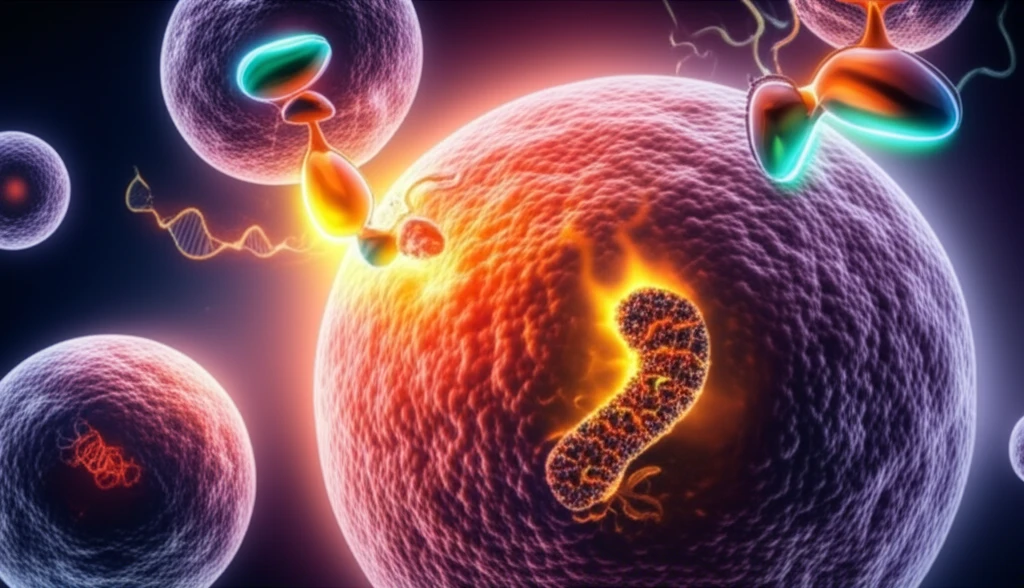
Triple-Negative Breast Cancer: Can a Natural Compound Hold the Key to New Treatments?
"Research explores how a pyrrole-based molecule from Tinospora cordifolia could revolutionize TNBC therapy by targeting cancer cells' weaknesses."
Triple-negative breast cancer (TNBC) accounts for approximately 15% of all breast cancer diagnoses worldwide, posing a significant challenge due to its aggressive nature and lack of targeted therapies. Unlike other breast cancer subtypes that express estrogen, progesterone, or HER2 receptors, TNBC lacks these markers, rendering traditional hormone therapies ineffective. This absence of specific targets makes TNBC difficult to treat and often results in poorer outcomes for patients.
The urgent need for innovative treatments has driven researchers to explore alternative approaches, including the investigation of natural compounds with anti-cancer properties. One promising avenue involves the medicinal plant Tinospora cordifolia, known for its diverse array of bioactive molecules, including alkaloids, steroids, and glycosides. These compounds have demonstrated various therapeutic effects, including anti-neoplastic, anti-metastatic, and anti-angiogenic activities.
Recent research has focused on a pyrrole-based small molecule, Bis(2-ethyl hexyl) 1H-pyrrole-3,4-dicarboxylate (TCCP), derived from Tinospora cordifolia. This molecule has shown potential in suppressing heat shock response and tumor angiogenesis. New studies suggest that TCCP can induce apoptosis—programmed cell death—in TNBC cells, offering a novel strategy to combat this challenging cancer. Let’s dive into the science behind TCCP and its potential impact on TNBC treatment.
How Does TCCP Target and Destroy TNBC Cells?

The study published in Chemico-Biological Interactions (2019) explores TCCP's mechanism of action in inducing apoptosis in MDA-MB-231 cells, a common TNBC cell line. Researchers examined various apoptotic markers to understand how TCCP triggers cell death. The key processes include:
- ROS Generation: TCCP increases the production of reactive oxygen species (ROS) within the cancer cells. High levels of ROS cause oxidative stress, damaging cellular components and triggering apoptosis.
- Calcium Increase: TCCP elevates intracellular calcium levels, disrupting normal cell signaling and contributing to mitochondrial dysfunction.
- Mitochondrial Damage: TCCP disrupts the mitochondrial membrane potential (ΔΨm), leading to mitochondrial permeability transition pore (MPTP) opening and cardiolipin peroxidation. These events compromise mitochondrial function and trigger the release of cytochrome c.
- Caspase Activation: Cytochrome c release activates caspases, a family of proteases that execute the apoptotic program. Caspase activation leads to DNA fragmentation and cell death.
- p53 Restoration: TCCP restores the activity of the p53 protein, a tumor suppressor that is often inactive or mutated in cancer cells. Activated p53 promotes apoptosis and inhibits tumor growth.
The Future of TCCP in Cancer Treatment
While these findings are promising, it’s important to remember that this research is still in its early stages. More studies are needed to fully understand TCCP’s effects, optimize its use, and evaluate its safety in humans. However, the potential of TCCP to target TNBC through multiple mechanisms offers a new avenue for developing effective and less toxic treatments. As research progresses, TCCP and similar natural compounds could play a significant role in improving outcomes for individuals facing this challenging disease.
